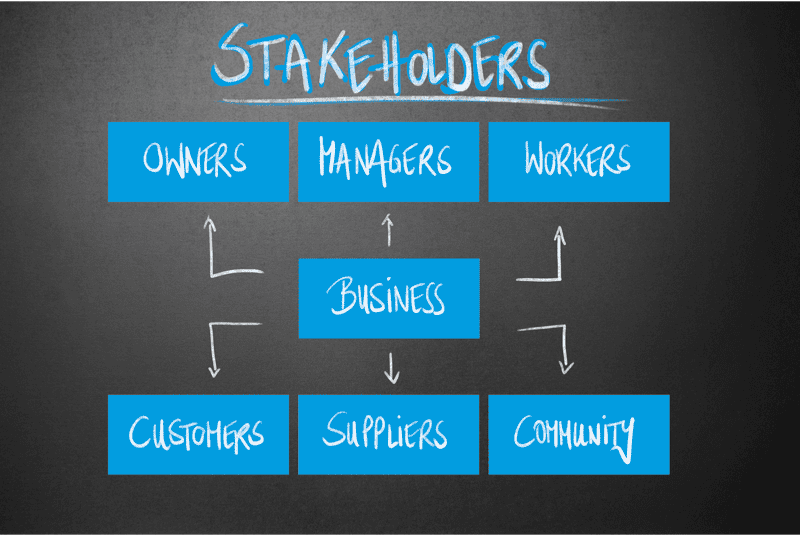How to Gather Input from Multiple Stakeholders
When your project or work environment relies on stakeholders to get work done, you need a structure and process to enable productive collaboration.
The Trend
Given the trend of hybrid work, you need to consider the most effective and efficient ways to gather input, regardless of how participants show up and the quality of the engagement experience you’re giving them.
This blog shares a case study, and tips on gathering input quickly from multiple stakeholders.

How to gather input quickly from multiple stakeholders
Organizations rely on internal and external stakeholders to achieve their goals, but the trend toward hybrid work adds complexity to the process.
When asked, most people are willing to lend a hand, but no one likes wasting their time or spending unnecessary time in meetings.
If you’re under pressure and wondering how to gather input quickly from multiple stakeholders, use these six tips to:
- engage stakeholders effectively and efficiently so you can move faster toward results;
- build solid relationships and;
- make the process of collaboration and informed decision-making easy and enjoyable.
Six tips for gathering stakeholder input quickly:
1Set the Agenda Last
As soon as they know they have to engage stakeholders, most people dive right into planning an agenda. Yes, you have to nail down a date and time, but you should commit to an agenda once you’ve sorted out a few things. See tips 2, 3 and 4.
Hint: Set a placeholder in your stakeholder’s agenda and share why you need them involved, then tell them more details will soon follow.
2Clarify meeting goals and outcomes
We collaborate with stakeholders to produce or create something. My favourite questions for clarifying meeting goals and outcomes are:
- What are you solving for?
- What do you want to get as a result of this effort?
- How will you know the engagement was a success?
Hint: Organize your workshop around a challenge to resolve and be clear on what outcomes you’re driving for. Communicate your goals and outcomes to your stakeholders when you invite them.
3Use an Experienced Facilitator
Engaging stakeholders in post-pandemic times adds complexity to the process. You will likely have some participants joining in person and others virtually.
An experienced group facilitator will help you plan, design and deliver your workshops to streamline and create efficiencies in engaging stakeholders, maximize in-person and virtual participation, and ensure you achieve your outcomes.
Hint: Find a facilitator with experience in designing for both in-person and virtual delivery—who knows how to guide the engagement process—and can integrate various digital facilitation tools
4Design to make collaboration easy and enjoyable
Productive collaboration needs structure and process to get the most out of teamwork. Most people approach stakeholder engagement as a shopping list of agenda items and “things to discuss” rather than focusing on the outcomes they want and the quality of the engagement.
This approach is neither efficient nor effective and doesn’t allow for the actual benefits of stakeholder engagement to emerge. And it doesn’t give you a framework to consider stakeholders’ needs appropriately. This is why we invite our clients to consider stakeholder engagement as a creative problem to solve rather than an agenda to deliver.
Using creative problem solving to design your collaboration gives you a flexible structure and process with norms for behaviour to guide stakeholder engagement and creates the psychological safety necessary for effective collaboration. It also provides a wealth of thinking tools to design productive stakeholder experiences that get the desired results.
By investing time in designing the session, you can move from a disjointed shopping list of “things to get done” to a coherent dialogue that streamlines the effort and creates efficiencies in getting to the desired outcome.
Hint: Remember to design your session with the end in mind. Be sure to consider how you will capture and report on the engagement results as you develop your sessions.
5Prepare Stakeholders for Success

To get everyone’s best thinking, stakeholders must be well-prepared before coming to your session. They need to know why you’re engaging them, what’s expected of them, and how you’ll work together. The context and process of engagement are far more important than the content you’re planning to cover.
People need clarity on the context and strategy to engage and contribute effectively to the situation. A pre-workshop information package can help. Send the package 5 – 7 business days before your engagement to address the who, what, where, when, why and how questions.
Hint: Ensure you include a primary agenda with timing and logistics and share contextual information—so they understand the situation. You can even task the stakeholders to review documentation or ask them questions to start pondering.
6Capture Lessons Learned
Engaging stakeholders is something you can continuously improve. Make sure you’re taking time at the end of every session to ask participants for feedback on what worked well, what you should do differently and what they learned or relearned in working with you.
Hint: Capture feedback without judgment, welcome all ideas. Get participants to brainstorm and record their answers to the feedback questions before you discuss them. Ask questions to clarify responses—never to justify what you did or didn’t do.
Need help planning a stakeholder engagement meeting? An executive retreat, all-staff, a town hall, or a community meeting?
Here’s our simple process which starts with booking a discovery call:
- We listen to what you’re working through and help you figure out your next steps
- We collaborate with you to develop a results-oriented solution to achieve your goals
- We guide the implementation of your solution to support you and your team.
Work with us. We deliver.


